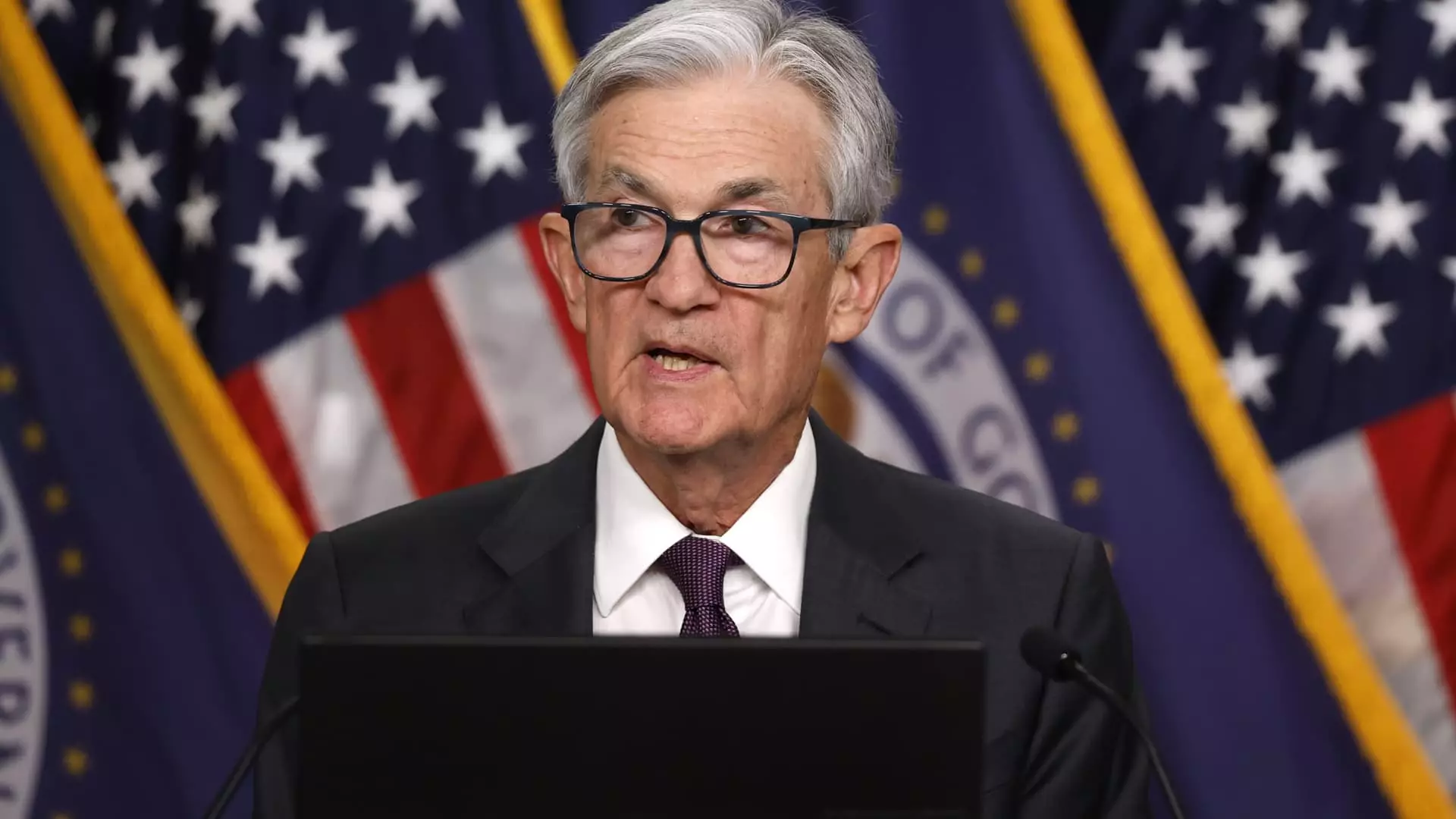In a climate rife with unpredictability, the Federal Reserve recently decided to keep its key interest rate unchanged, a choice that reflects a broader strategy of caution against the backdrop of President Trump’s turbulent trade policies. The Federal Open Market Committee (FOMC) opted to maintain the overnight borrowing rate in a narrow corridor between 4.25% and 4.5%, where it has remained since December. This decision underscores a notable response to an economy signaling both resilience and stress but ultimately sitting on a precipice of uncertainty regarding trade.
The Fed’s announcement resonated with a foreboding sense of unpredictability, explicitly highlighting an increase in uncertainty surrounding the economic outlook. This apprehension was further elaborated during Chair Jerome Powell’s post-meeting news conference, where he addressed the potential ramifications of ongoing tariff complexities. The volatility engendered by these trade decisions has placed the Fed in a precarious position; it must tread carefully to ensure that the twin pillars of its mandate—full employment and price stability—do not topple due to external shocks.
Trade Policy: The Double-Edged Sword
The interplay of tariffs and economic stability elicits concerns over a lurid economic scenario reminiscent of stagflation—a combination of stagnant economic growth and high inflation that has not been witnessed in the U.S. since the 1980s. Elevated tariffs, as mandated by the administration, run the risk of igniting inflation while simultaneously crimping growth, creating a dichotomy that complicates monetary policy. The Fed’s statement boldly captures this dual risk, suggesting trepidation about the economic trajectory.
In a landscape where the relationship between fiscal policy and economic outcomes is increasingly complex, the Fed must remain vigilant. The stakes are high. Higher unemployment could rear its head, paralleling inflationary pressures that arise from tariffs—an intricate dance that has become all too familiar for policymakers. The challenge lies not just in responding to current conditions, but in anticipating the repercussions of ongoing negotiations with trading partners against the clock of the 90-day deadline that commenced in April.
Market Sentiment: A Balancing Act
Market reactions post-Fed decision reveal a divided sentiment among investors. While the initial response to the rate announcement led to a momentary dip in stocks, the Dow Jones Industrial Average eventually reflected a recovery, regaining nearly 300 points. This juxtaposition of optimism and caution encapsulates the current state of market psyche, as investors wrestle with the implications surrounding a clashing trade landscape.
Interestingly, the Fed’s willingness to hold its position—unanimously supported—hints at a broader confidence in current economic fundamentals, despite existing uncertainties. Job growth remains a bright point, with nonfarm payrolls rising significantly, a fact the Fed cannot overlook as it devises future strategies. This resilience empowers the central bank as it navigates the delicate balance of stimulating an economy while curbing the potential fallout from an escalating trade conflict.
Inflation and Consumer Confidence: An Ongoing Tug of War
While inflation rates have slowly inched toward the Fed’s target of 2%, looming tariffs threaten to precipitate an inevitable rise in prices stemming from increased costs on imports. President Trump’s overtures advocating for rate cuts add yet another layer of complexity to this already intricate scenario. With inflation currently recorded at 2.3% headline and 2.6% core, the central bank finds itself in a scenario where decisions cannot be made in a vacuum; the reverberations of trade policy are ever-present.
Consumer sentiment reflects a knot of apprehension, as reported anxieties in business surveys shed light on the underlying stresses companies are experiencing. The specter of tariffs induces trepidation among managers, with many voicing worries about pricing dynamics and supply chains. The resultant instability feeds into market pricing regarding Fed actions, where expectations oscillate with every headline emerging from trade negotiations.
The Road Ahead of the Fed
As the Fed looks forward, the necessity for patience in policy adjustments is evident. Though the economic picture remains complex, the principles of sound monetary policy dictate a slow and steady approach amidst swirling uncertainties. Traders are left contemplating potential rate cuts later in the year; yet, given the fluid nature of current events, what lies ahead will depend largely on the outcomes of ongoing trade discussions and the broader economic indicators that will come into play.
With the Fed at the helm, its dual mandate is encumbered by not just economic indicators but geopolitical shifts as well. The path it chooses could redefine the economic landscape, but it must do so with care, ensuring that its decisions resonate positively through the economy while averting the specters of inflation and unemployment that destabilize financial futures.

